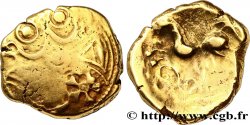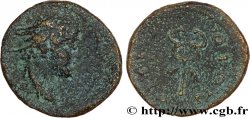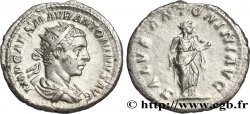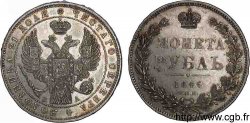v34_1241 - TAYAC HOARD - GIRONDE Statère du type de Beaune
MONNAIES 34 (2008)
Начальная цена : 2 400.00 €
Назначить цену : 3 500.00 €
Цена реализации : 2 400.00 €
Количество ставок : 1
Максимальная предлагаемая цена : 2 850.00 €
Начальная цена : 2 400.00 €
Назначить цену : 3 500.00 €
Цена реализации : 2 400.00 €
Количество ставок : 1
Максимальная предлагаемая цена : 2 850.00 €
Тип Statère du type de Beaune
Дата: Ier siècle avant J.-C.
Металл: gold
Диаметр: 23 mm
Ориентация осей монеты: 3 h.
Вес: 7,32 g.
Редкость: R3
Комментарии о состоянии
Flan large et frappe centrée, mais cette monnaie a été anciennement astiquée ou/et brossée. Faiblesse de frappe en périphérie au droit et sur l'aurige et sous le cheval au revers. Une légère rayure est à signaler du cou à la joue au droit
Ссылки в каталоге: :
Происхождение:
Cet exemplaire provient vraisemblablement du trésor de Tayac, découvert en 1893
Лицевая сторона
Аверс: легенда: ANÉPIGRAPHE.
Аверс: описание: Tête à droite ornée d'une couronne de lauriers partant du front et rejoignant la nuque ; un triskèle à la base du cou et une sorte de fleuron devant la bouche.
Обратная сторона
Реверс: легенда: ANÉPIGRAPHE.
Реверс: Описание: Bige à droite conduit par un aurige stylisé en bord de flan, un triskèle sous les chevaux.
Комментарий
Cet exemplaire semble avoir été frappé avec le même coin de droit D1 que les monnaies n° 190, 191 et 195 du musée de Zurich, sans qu’il soit possible de proposer une liaison de coin de revers. ce coin est associé aux revers R1 à R6 associés exclusivement à ce coin D1. Même coin de droit que la monnaie suivante, n° 1242.
La série de globules sous les sabots des chevaux est caractéristique et se retrouve sur les n° 190-191 et 193-195 du musée de Zurich.
This example appears to have been struck with the same obverse die D1 as coins nos. 190, 191 and 195 in the Zurich Museum, although it is not possible to propose a reverse die link. This die is associated with reverses R1 to R6 associated exclusively with this die D1. Same obverse die as the following coin, no. 1242. The series of globules under the horses' hooves is characteristic and is found on nos. 190-191 and 193-195 in the Zurich Museum
La série de globules sous les sabots des chevaux est caractéristique et se retrouve sur les n° 190-191 et 193-195 du musée de Zurich.
This example appears to have been struck with the same obverse die D1 as coins nos. 190, 191 and 195 in the Zurich Museum, although it is not possible to propose a reverse die link. This die is associated with reverses R1 to R6 associated exclusively with this die D1. Same obverse die as the following coin, no. 1242. The series of globules under the horses' hooves is characteristic and is found on nos. 190-191 and 193-195 in the Zurich Museum








 Cообщить об ошибке
Cообщить об ошибке Распечатать страницу
Распечатать страницу Отправить мой выбор
Отправить мой выбор Задать вопрос
Задать вопрос Consign / sell
Consign / sell










